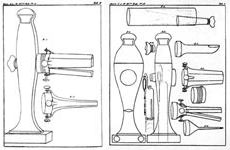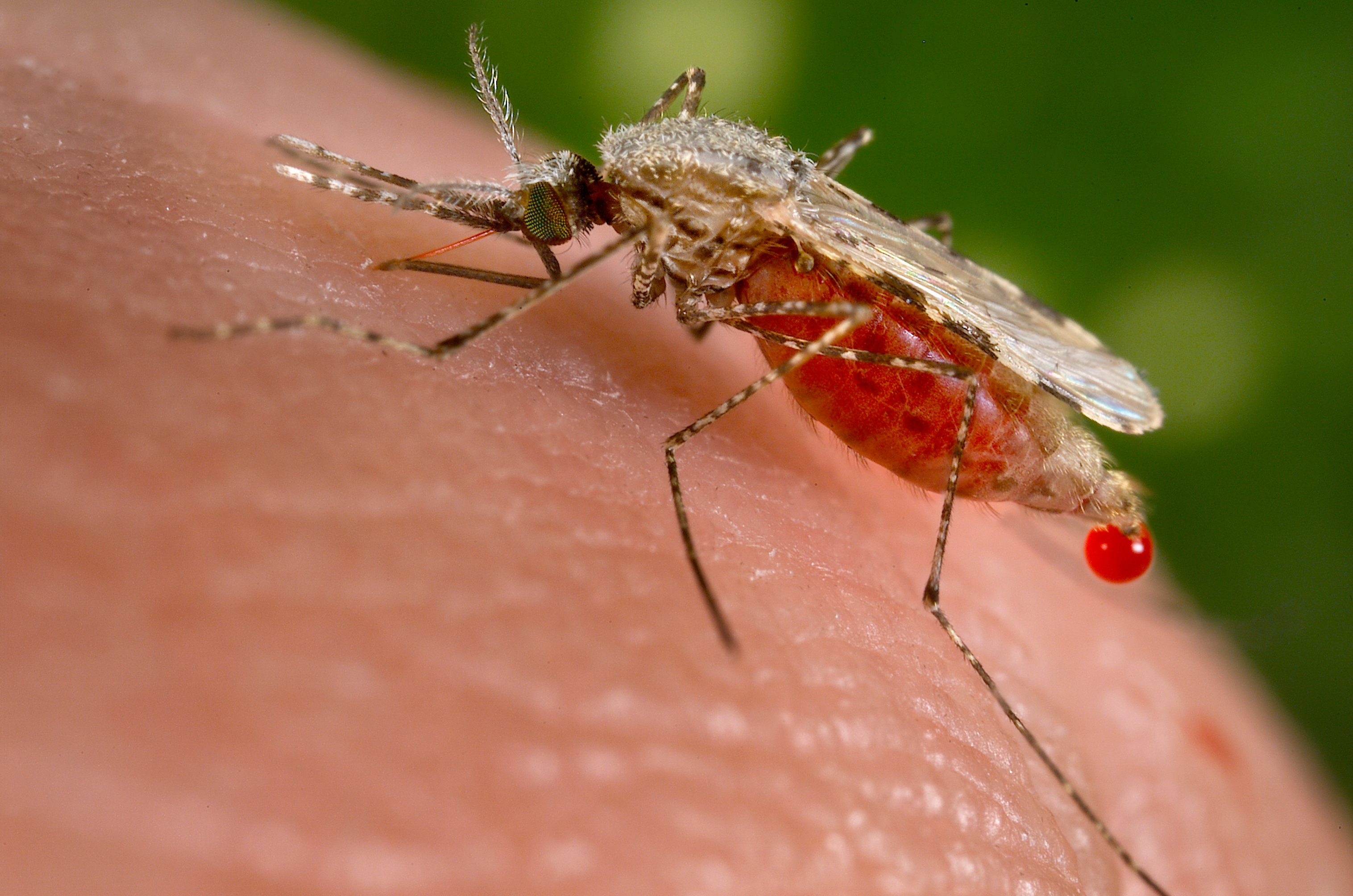|
Chapare Virus
Chapare virus is a virus from the family '' Arenaviridae'' which causes a hemorrhagic fever in humans known as Chapare hemorrhagic fever. It was first described after an outbreak of a novel zoonotic mammarenavirus infection occurred in the village of Samuzabeti, Chapare Province, Bolivia, in January 2003. A small number of people were infected and one person died. In 2019, nine people became infected with the virus in the La Paz regional area, four of whom died. Nosocomial and human-to-human transmission of the virus occurred in at least three of the cases which resulted in the death of a medical intern and a gastroenterologist. Like other members of the Arenavirus family, the specific zoonotic reservoir and primary transmission vector is suspected to be a rodent, probably the small-eared pygmy rice rat. Virology The Chapare virus is an enveloped virus with a bi-segmented single-stranded ambisense RNA genome. The two RNA segments are denoted Small (S) and Large (L). It belon ... [...More Info...] [...Related Items...] OR: [Wikipedia] [Google] [Baidu] |
Hemorrhagic Fever
Viral hemorrhagic fevers (VHFs) are a diverse group of diseases. "Viral" means a health problem caused by infection from a virus, " hemorrhagic" means to bleed, and "fever" means an unusually high body temperature. Bleeding and fever are common signs of VHFs, which is how the group of infections got its common name. There are five known families of RNA viruses which cause VHFs: '' Arenaviridae'', ''Filoviridae'', ''Flaviviridae'', ''Hantaviridae'', and ''Rhabdoviridae''. Some VHFs are usually mild, such as nephropathia epidemica (within the family ''Hantaviridae''). But some are usually severe and have a high death rate, such as Ebola virus (within the family ''Filoviridae''). All VHFs can potentially cause severe blood loss, high fever, and death. Both humans and non human animals can be infected. Signs and symptoms The following are signs and symptoms of most or all VHFs. *Circulatory shock *Diarrhea (feces which resemble more liquid than solid) *Headache *Hypotension (l ... [...More Info...] [...Related Items...] OR: [Wikipedia] [Google] [Baidu] |
Zoonotic
A zoonosis (; plural zoonoses) or zoonotic disease is an infectious disease of humans caused by a pathogen (an infectious agent, such as a virus, bacterium, parasite, fungi, or prion) that can jump from a non-human vertebrate to a human. When humans infect non-humans, it is called reverse zoonosis or anthroponosis. Major modern diseases such as Ebola and salmonellosis are zoonoses. HIV was a zoonotic disease transmitted to humans in the early part of the 20th century, though it has now evolved into a separate human-only disease. Human infection with animal influenza viruses is rare, as they do not transmit easily to or among humans. However, avian and swine influenza viruses in particular possess high zoonotic potential, and these occasionally recombine with human strains of the flu and can cause pandemics such as the 2009 swine flu. Zoonoses can be caused by a range of disease pathogens such as emergent viruses, bacteria, fungi and parasites; of 1,415 pathogens known to i ... [...More Info...] [...Related Items...] OR: [Wikipedia] [Google] [Baidu] |
Chapare Province
Chapare (, also called The Chapare, is a rural province in the northern region of Cochabamba Department in central Bolivia. Most of the territory consists of valley rainforests that surround the area's main waterway, the Chapare River, which is also a tributary of the Amazon River. The provincial capital is Sacaba, 11 km east of Cochabamba. Its principal town is Villa Tunari, a popular tourist destination. In recent decades, the Chapare province has become a haven for illegal cultivation of the coca plant, which can be used to produce cocaine. This is due to Bolivian drug law, which until recently only permitted the Yungas region to legally grow coca, despite Chapare being a historical area for growth due to its fertility. For this reason, Chapare has been a primary target for coca eradication in recent years, with frequent and heated clashes between the U.S. Drug Enforcement Administration and Bolivian cocaleros. The law has since been changed by a deal that was struck ... [...More Info...] [...Related Items...] OR: [Wikipedia] [Google] [Baidu] |
Bolivia
Bolivia, officially the Plurinational State of Bolivia, is a landlocked country located in central South America. The country features diverse geography, including vast Amazonian plains, tropical lowlands, mountains, the Gran Chaco Province, warm valleys, high-altitude Andean plateaus, and snow-capped peaks, encompassing a wide range of climates and biomes across its regions and cities. It includes part of the Pantanal, the largest tropical wetland in the world, along its eastern border. It is bordered by Brazil to the Bolivia-Brazil border, north and east, Paraguay to the southeast, Argentina to the Argentina-Bolivia border, south, Chile to the Bolivia–Chile border, southwest, and Peru to the west. The seat of government is La Paz, which contains the executive, legislative, and electoral branches of government, while the constitutional capital is Sucre, the seat of the judiciary. The largest city and principal industrial center is Santa Cruz de la Sierra, located on the Geog ... [...More Info...] [...Related Items...] OR: [Wikipedia] [Google] [Baidu] |
La Paz Department (Bolivia)
The La Paz Department of Bolivia comprises with a 2024 census population of 3,022,566 inhabitants. It is situated at the western border of Bolivia, sharing Lake Titicaca with the neighboring Peru. It contains the Cordillera Real mountain range, which reaches altitudes of . Northeast of the Cordillera Real are the '' Yungas'', the steep eastern slopes of the Andes Mountains that make the transition to the Amazon River basin to the northeast. The capital of the department is the city of La Paz and is the administrative city and seat of government/national capital of Bolivia. Provinces The Department of La Paz is divided into 20 provinces (''provincias'') which are further subdivided into 85 municipalities (''municipios'') and - on the fourth level - into cantons. The provinces with their capitals are: Government The chief executive office of Bolivia's departments (since May 2010) is the Governor; before then, the office was called the Prefect, and until 2006 the prefec ... [...More Info...] [...Related Items...] OR: [Wikipedia] [Google] [Baidu] |
Nosocomial
A hospital-acquired infection, also known as a nosocomial infection (from the Greek , meaning "hospital"), is an infection that is acquired in a hospital or other healthcare facility. To emphasize both hospital and nonhospital settings, it is sometimes instead called a healthcare-associated infection. Such an infection can be acquired in a hospital, nursing home, rehabilitation facility, outpatient clinic, diagnostic laboratory or other clinical settings. A number of dynamic processes can bring contamination into operating rooms and other areas within nosocomial settings. Infection is spread to the susceptible patient in the clinical setting by various means. Healthcare staff also spread infection, in addition to contaminated equipment, bed linens, or air droplets. The infection can originate from the outside environment, another infected patient, staff that may be infected, or in some cases, the source of the infection cannot be determined. In some cases the microorganism origi ... [...More Info...] [...Related Items...] OR: [Wikipedia] [Google] [Baidu] |
Medical Intern
A medical (or surgical) intern is a physician in training who has completed medical school and has a medical degree, but does not yet have a license to practice medicine unsupervised. Medical education generally ends with a period of practical training similar to internship, but the way the overall program of academic and practical medical training is structured differs depending upon the country, as does the terminology used (see medical education and medical school for further details). Australia In Australia, medical graduates must complete one year in an accredited hospital post before they receive full registration. This year of conditional registration is called the intern year. An internship is not necessarily completed in a hospital at the same state as the graduate's medical school. Austria In Austria, the sixth and final year of medical school is called "Klinisch-praktisches Jahr" or "KPJ" (literally translated: clinical practical year). In this internship students com ... [...More Info...] [...Related Items...] OR: [Wikipedia] [Google] [Baidu] |
Gastroenterologist
Gastroenterology (from the Greek gastḗr- "belly", -énteron "intestine", and -logía "study of") is the branch of medicine focused on the digestive system and its disorders. The digestive system consists of the gastrointestinal tract, sometimes referred to as the ''GI tract,'' which includes the esophagus, stomach, small intestine and large intestine as well as the accessory organs of digestion which include the pancreas, gallbladder, and liver. The digestive system functions to move material through the GI tract via peristalsis, break down that material via digestion, absorb nutrients for use throughout the body, and remove waste from the body via defecation. Physicians who specialize in the medical specialty of gastroenterology are called gastroenterologists or sometimes ''GI doctors''. Some of the most common conditions managed by gastroenterologists include gastroesophageal reflux disease, gastrointestinal bleeding, irritable bowel syndrome, inflammatory bowel disease (IBD ... [...More Info...] [...Related Items...] OR: [Wikipedia] [Google] [Baidu] |
Vector (epidemiology)
In epidemiology, a disease vector is any living agent that carries and transmits an infectious pathogen such as a parasite or microbe, to another living organism. Agents regarded as vectors are mostly blood-sucking (Hematophagy, hematophagous) arthropods such as mosquitoes. The first major discovery of a disease vector came from Ronald Ross in 1897, who discovered the malaria pathogen when he dissected the stomach tissue of a mosquito. Arthropods Arthropods form a major group of pathogen vectors with mosquitoes, Fly, flies, Sandfly, sand flies, lice, fleas, ticks, and mites transmitting a huge number of pathogens. Many such vectors are haematophagous, which feed on blood at some or all stages of their lives. When the insects and ticks feed on blood, the pathogen enters the blood stream of the host. This can happen in different ways. The ''Anopheles'' mosquito, a vector for malaria, filariasis, and various arthropod-borne-viruses (arboviruses), inserts its delicate mouthpart under ... [...More Info...] [...Related Items...] OR: [Wikipedia] [Google] [Baidu] |
Rodent
Rodents (from Latin , 'to gnaw') are mammals of the Order (biology), order Rodentia ( ), which are characterized by a single pair of continuously growing incisors in each of the upper and Mandible, lower jaws. About 40% of all mammal species are rodents. They are native to all major land masses except for Antarctica, and several oceanic islands, though they have subsequently been introduced to most of these land masses by human activity. Rodents are extremely diverse in their ecology and lifestyles and can be found in almost every terrestrial habitat, including human-made environments. Species can be arboreal, fossorial (burrowing), saltatorial/ricochetal (leaping on their hind legs), or semiaquatic. However, all rodents share several morphological features, including having only a single upper and lower pair of ever-growing incisors. Well-known rodents include Mouse, mice, rats, squirrels, prairie dogs, porcupines, beavers, Cavia, guinea pigs, and hamsters. Once included wi ... [...More Info...] [...Related Items...] OR: [Wikipedia] [Google] [Baidu] |
Small-eared Pygmy Rice Rat
''Oligoryzomys microtis'', also known as the small-eared colilargo or small-eared pygmy rice rat, is a species of rodent in the genus ''Oligoryzomys'' of family Cricetidae. It is found in western List of mammals of Brazil, Brazil, eastern List of mammals of Peru, Peru, List of mammals of Bolivia, Bolivia, and northern List of mammals of Paraguay, Paraguay. Description ''Oligoryzomys microtis'' has a total length of including a tail of . It weighs about and is the smallest species in the genus. In proportion to the head and body length, the hind feet are relatively long, being 28.5% of their length. This compares with the rather similar ''Oligoryzomys nigripes'' where the proportion is 24.5%. The ears are small and densely furred inside. The cheeks may be grey or orangeish-brown. The back is brownish and the underparts are whitish or greyish, sometimes tinged with buff. The tail is rather darker on the upper surface than the lower surface. Its karyotype has Ploidy#Diploid, 2n = ... [...More Info...] [...Related Items...] OR: [Wikipedia] [Google] [Baidu] |




